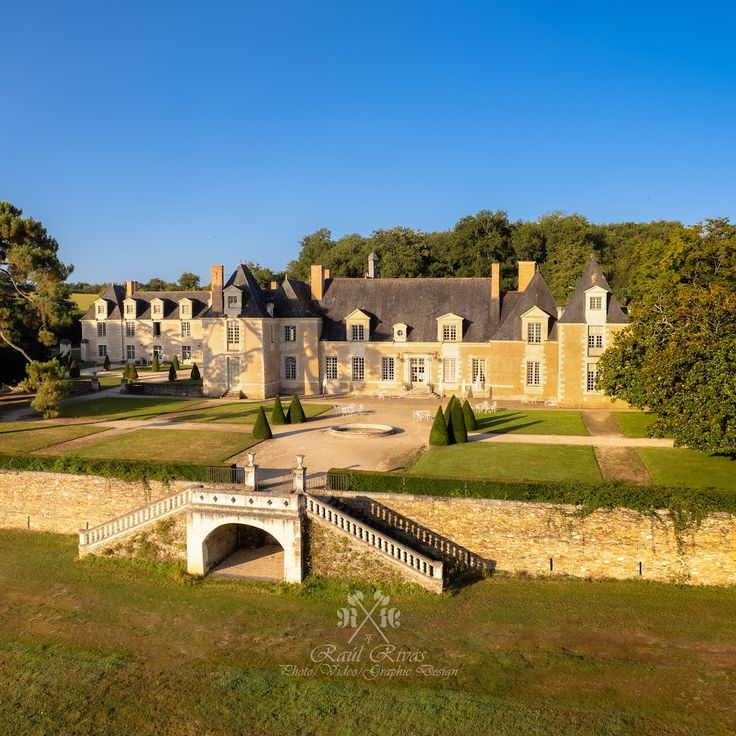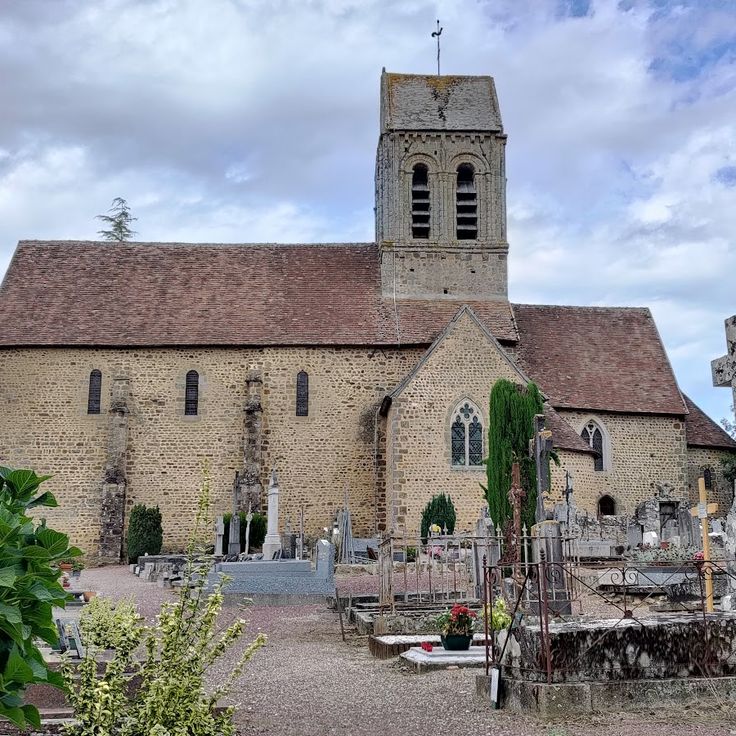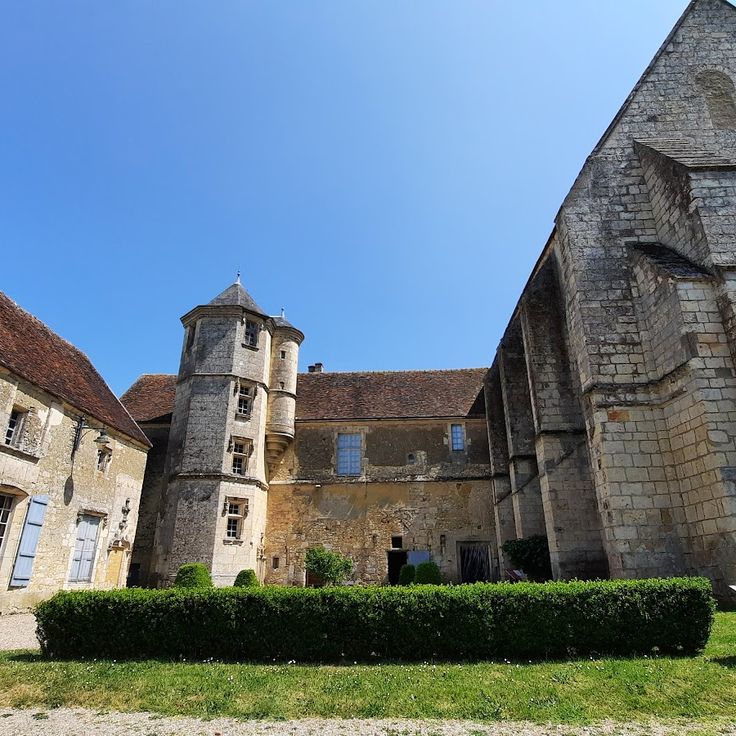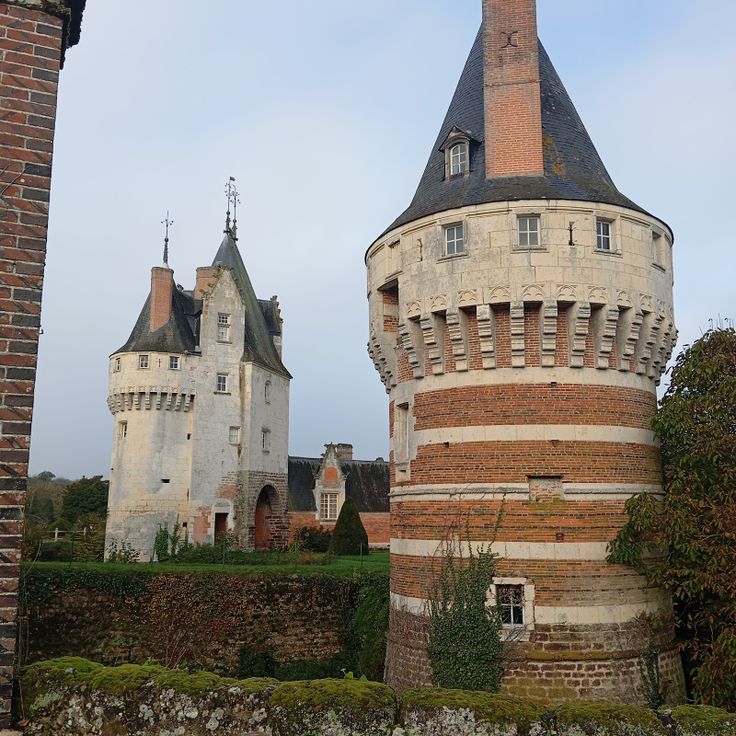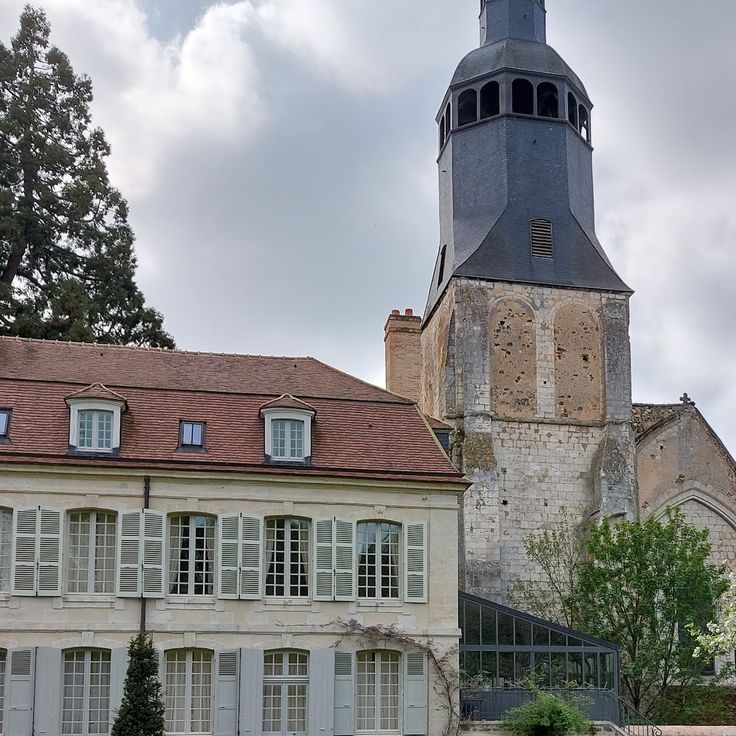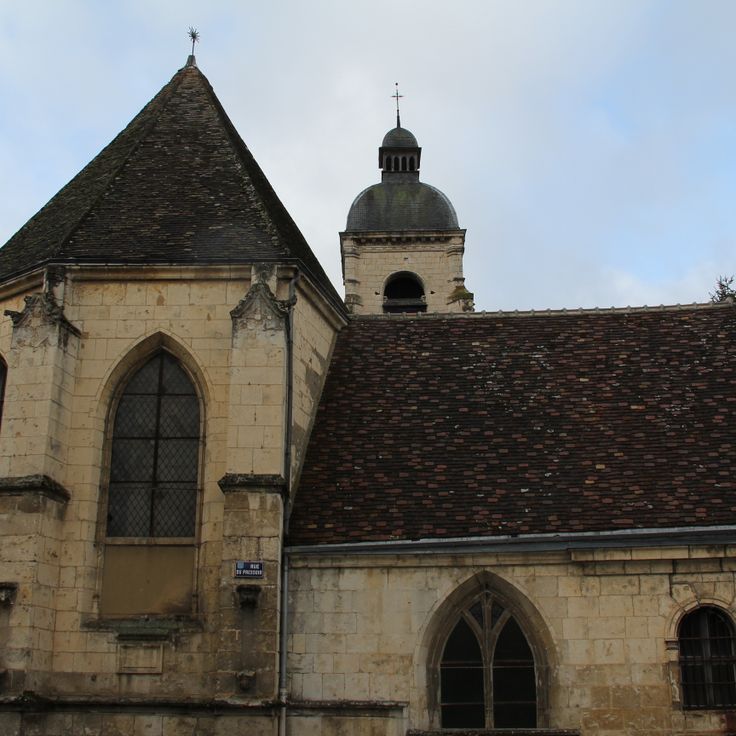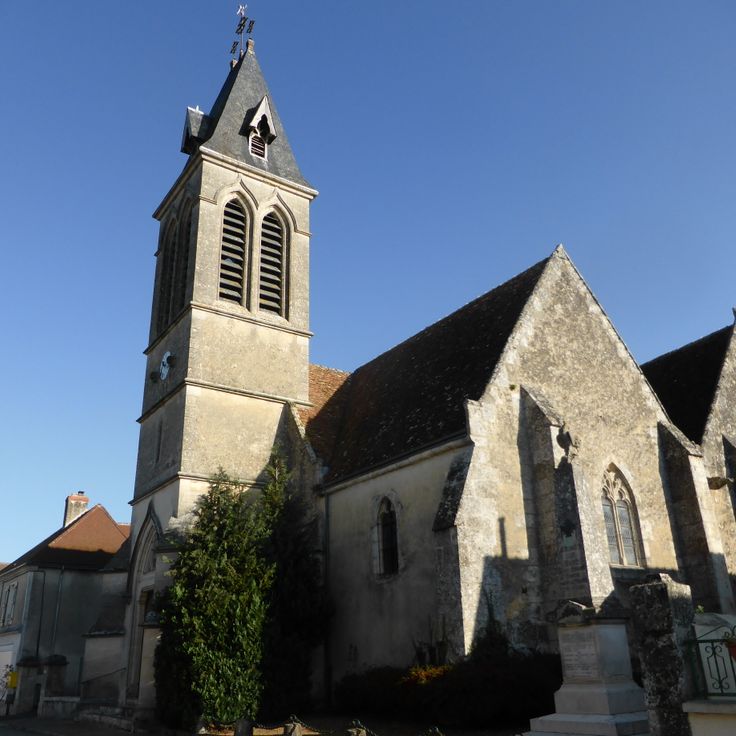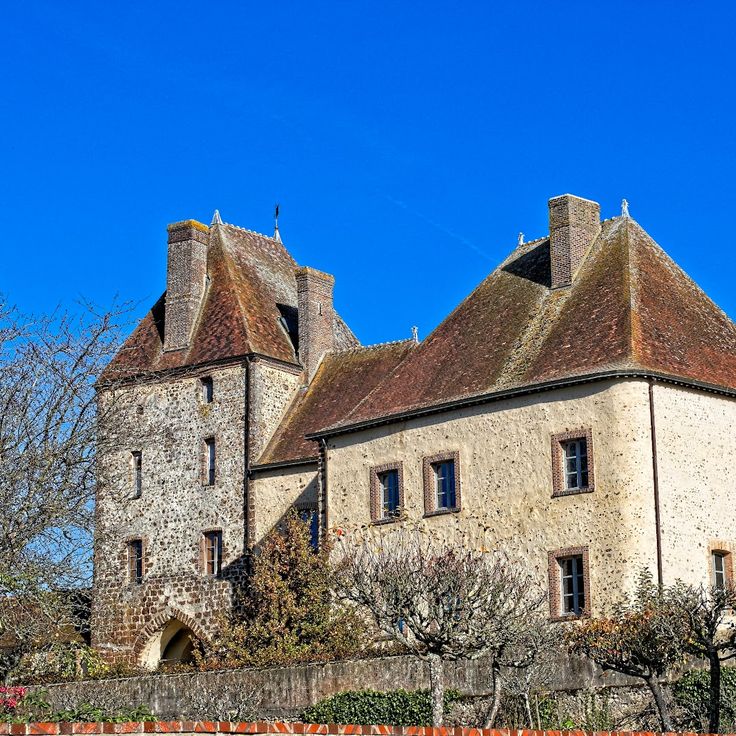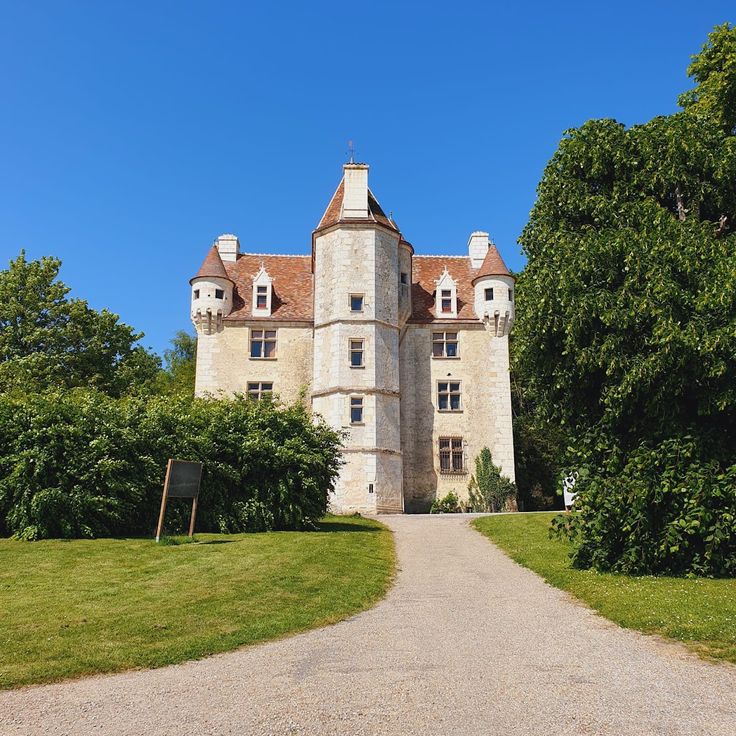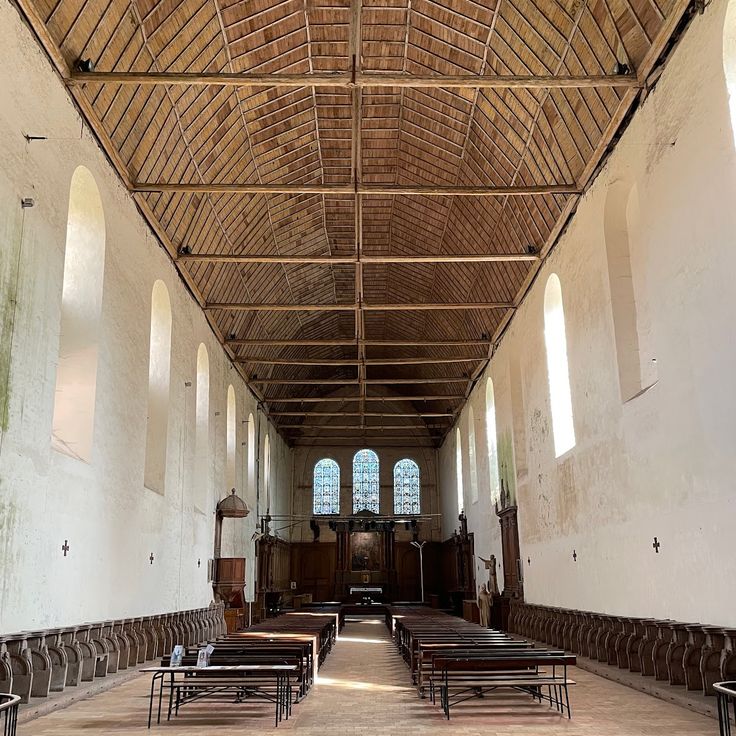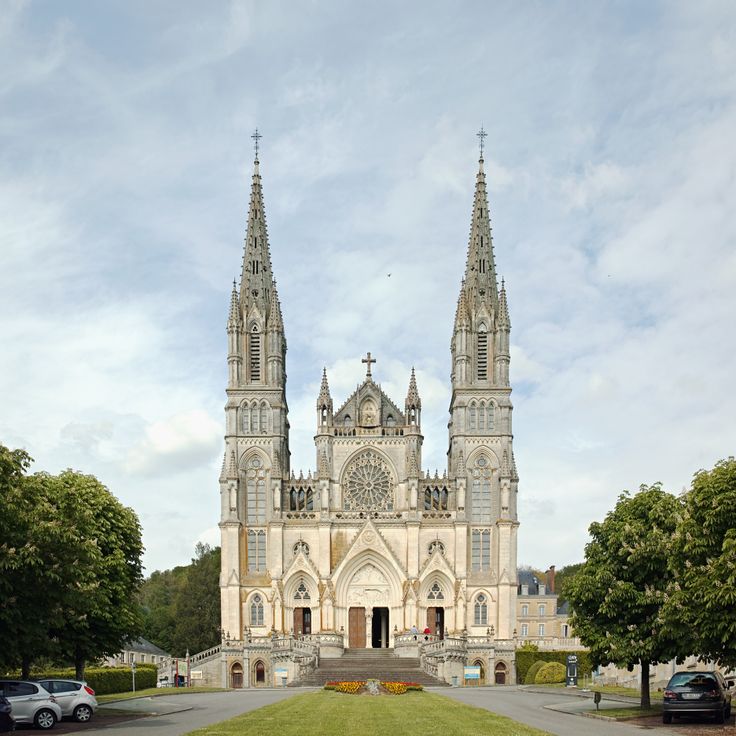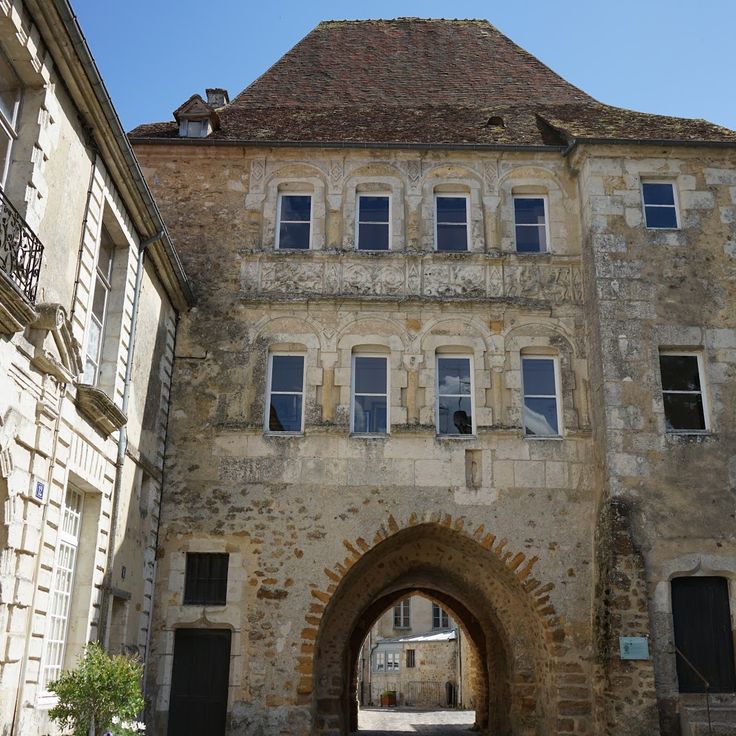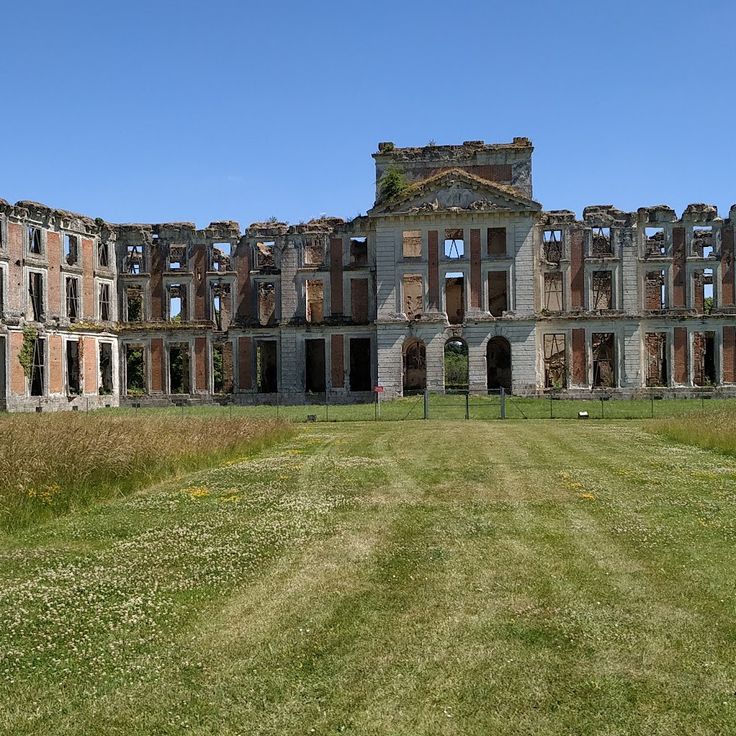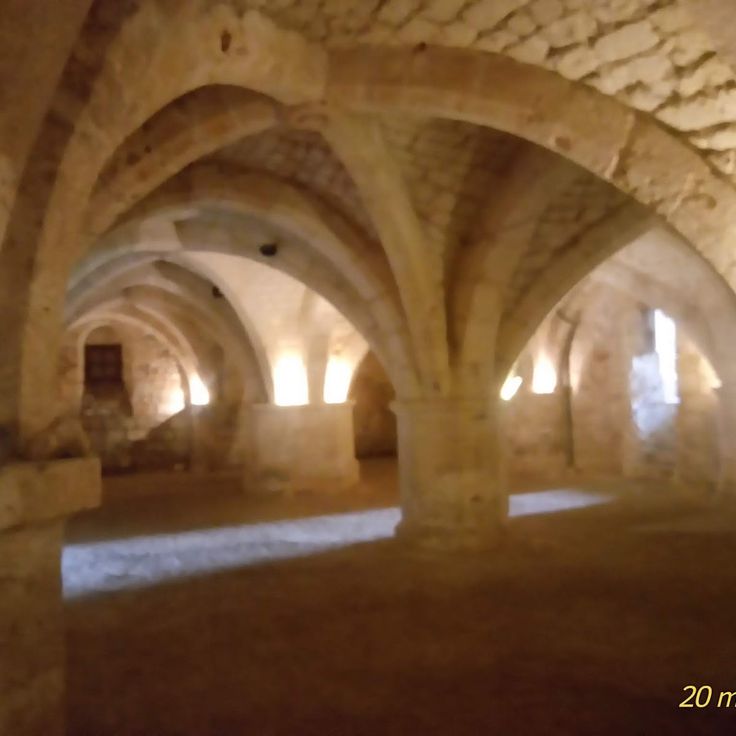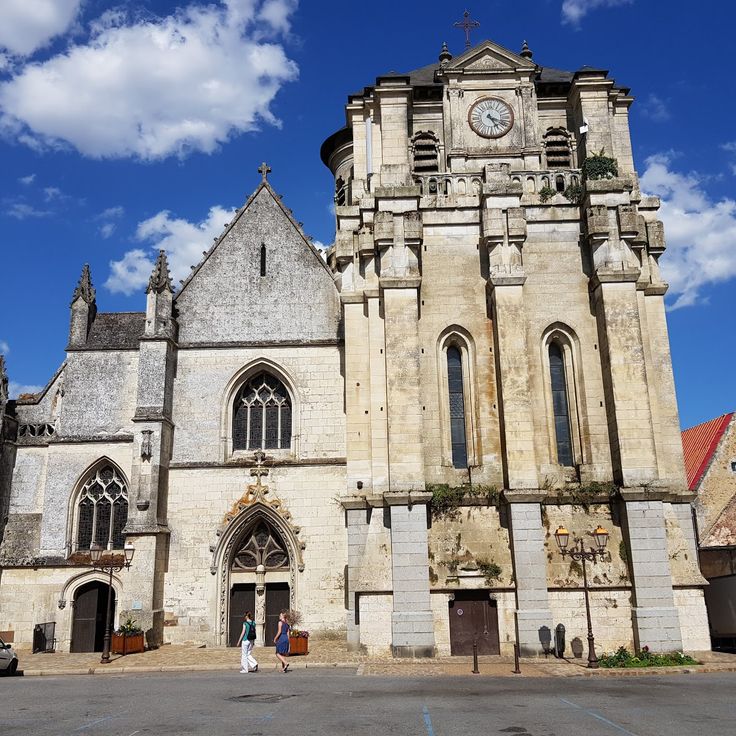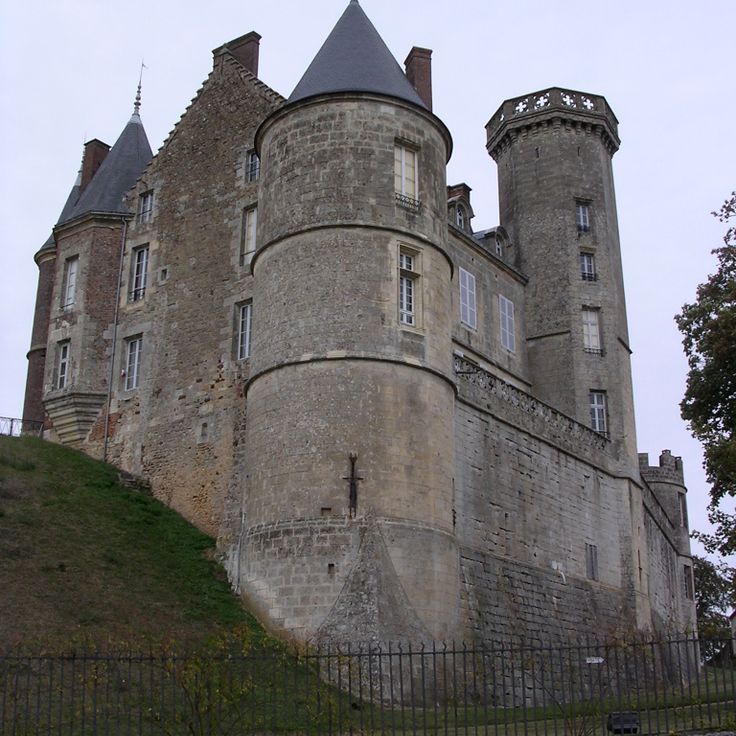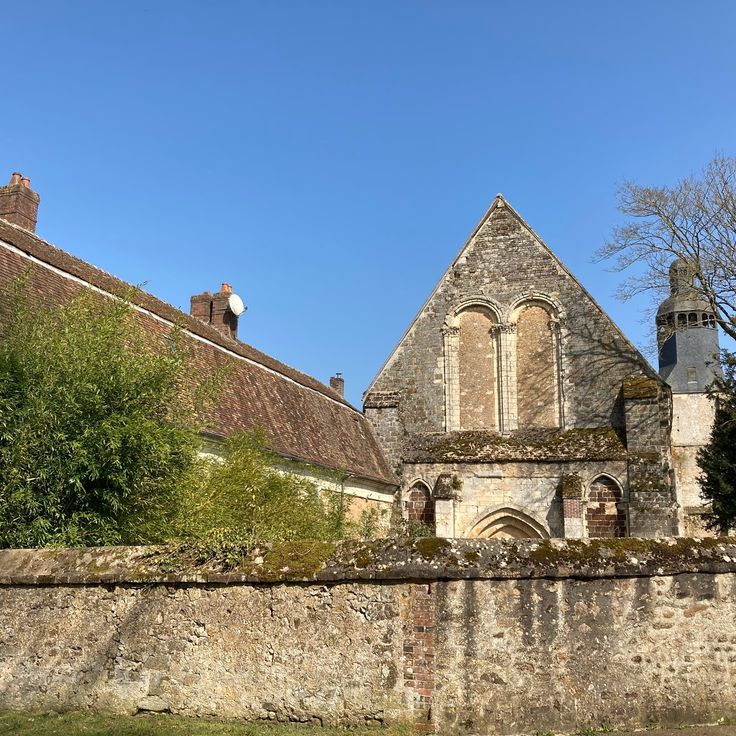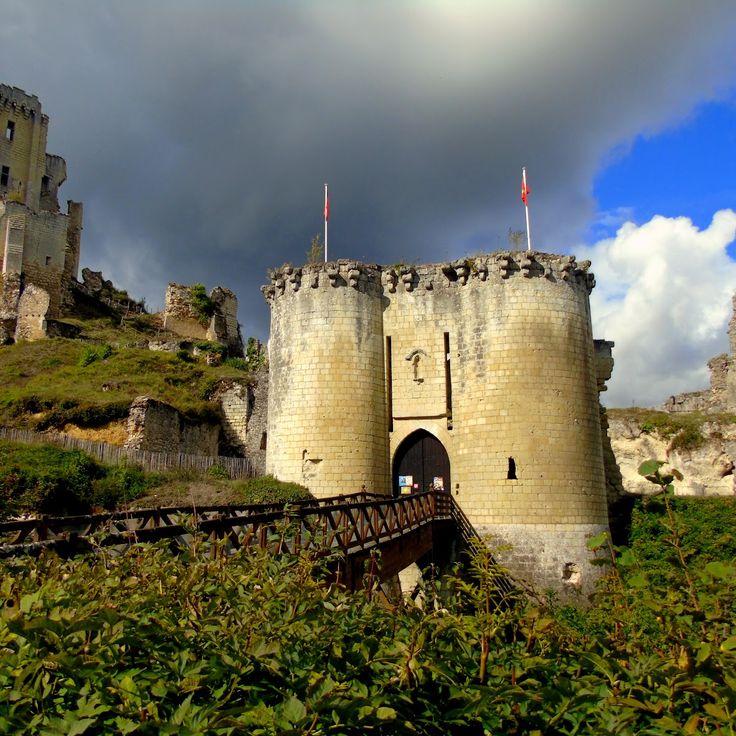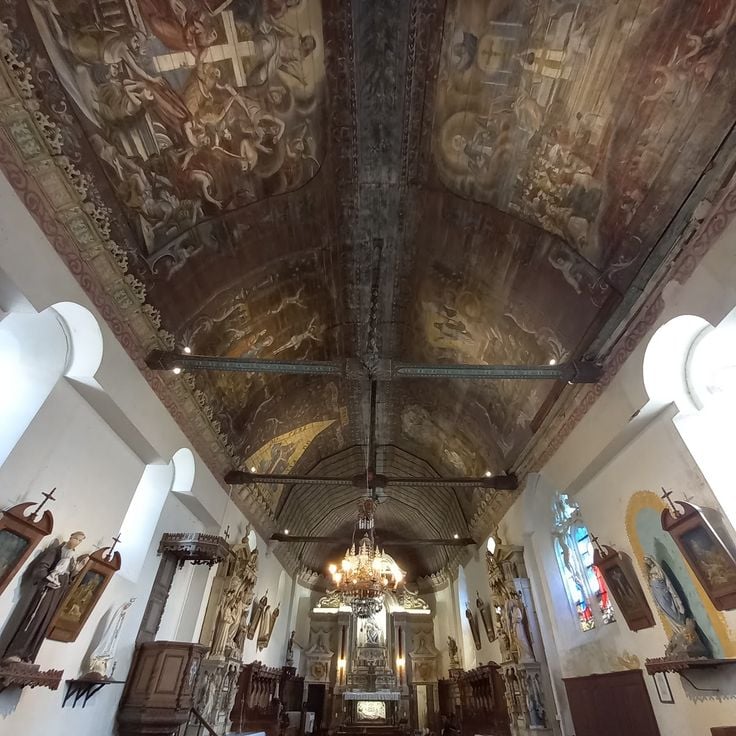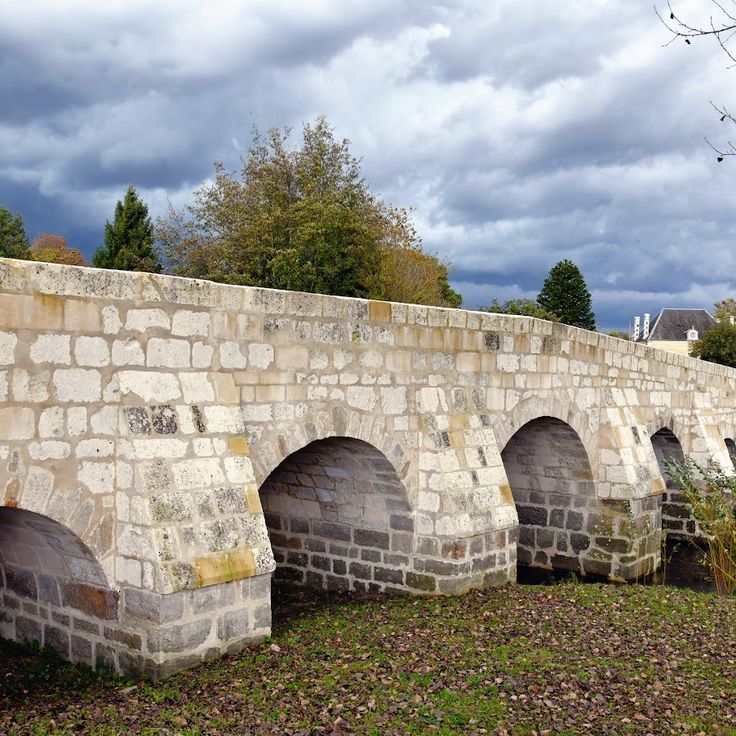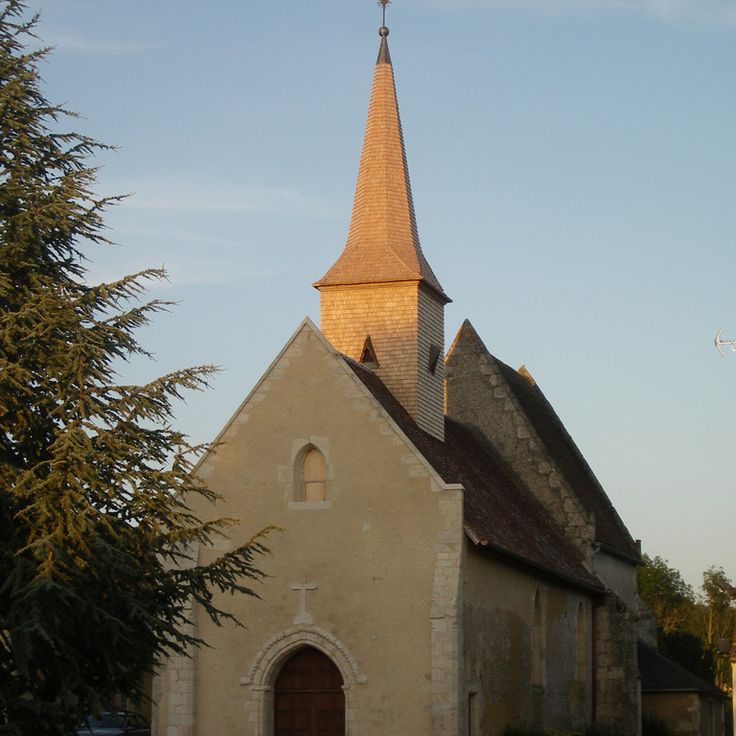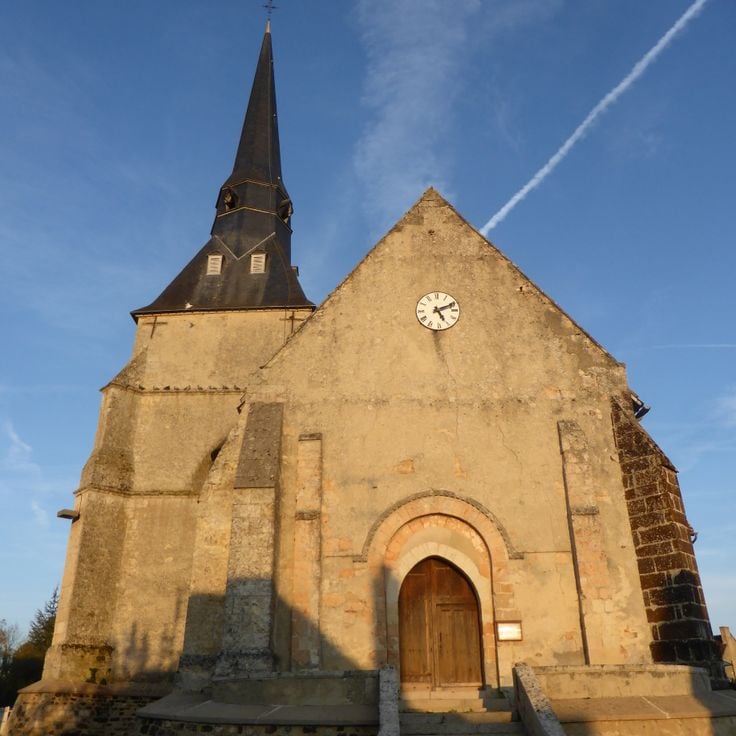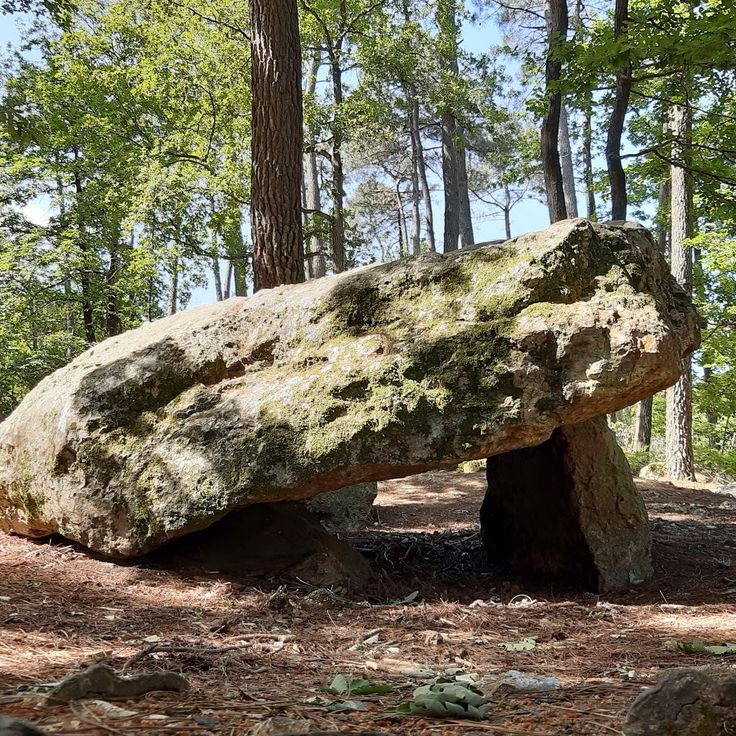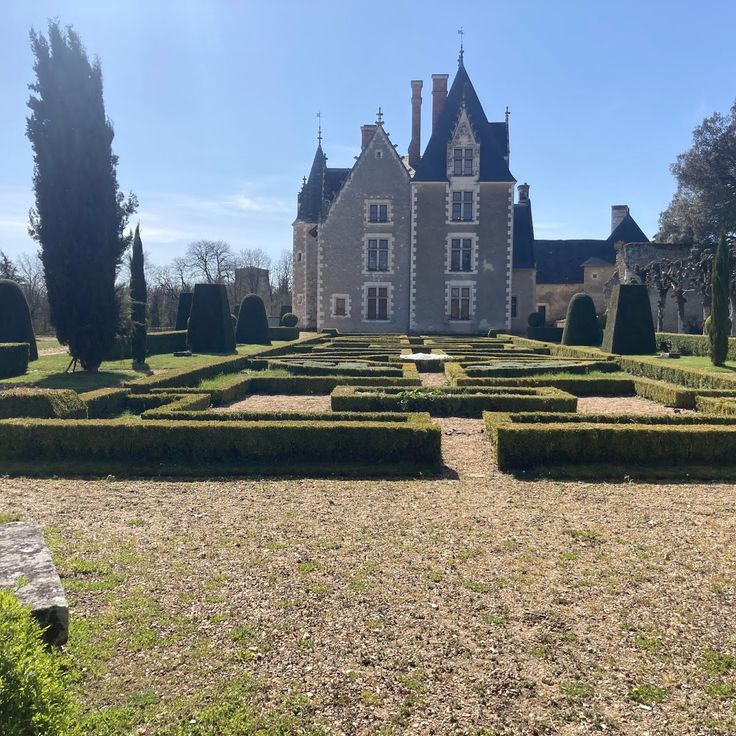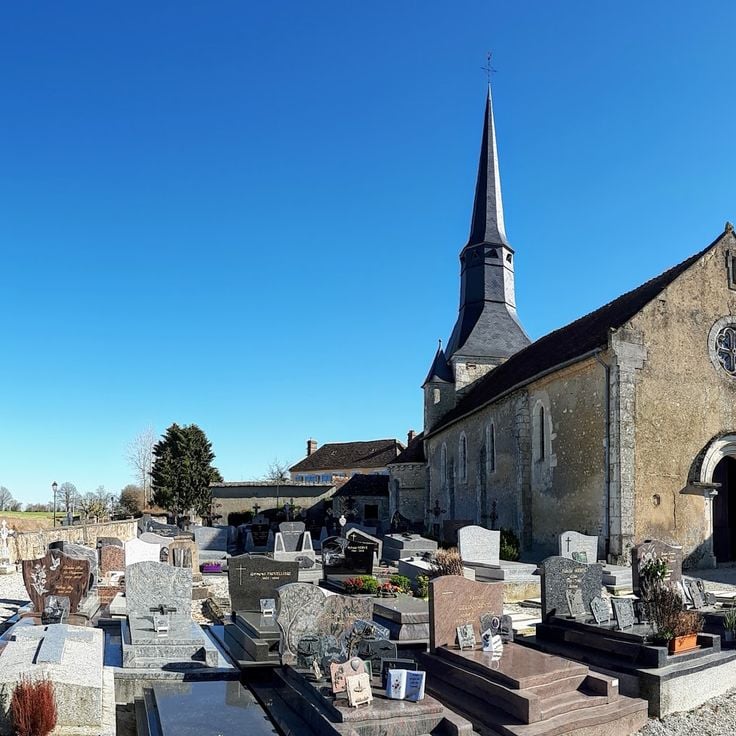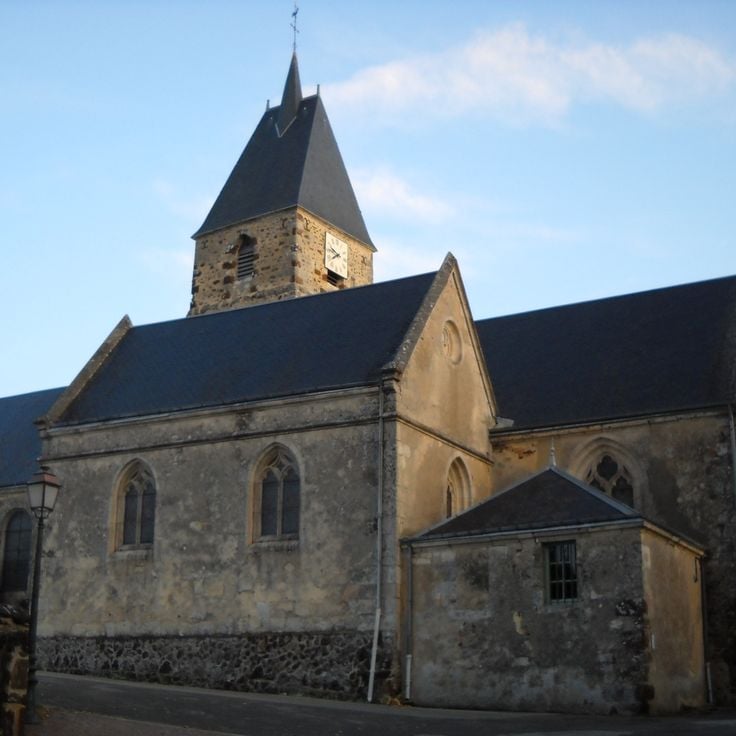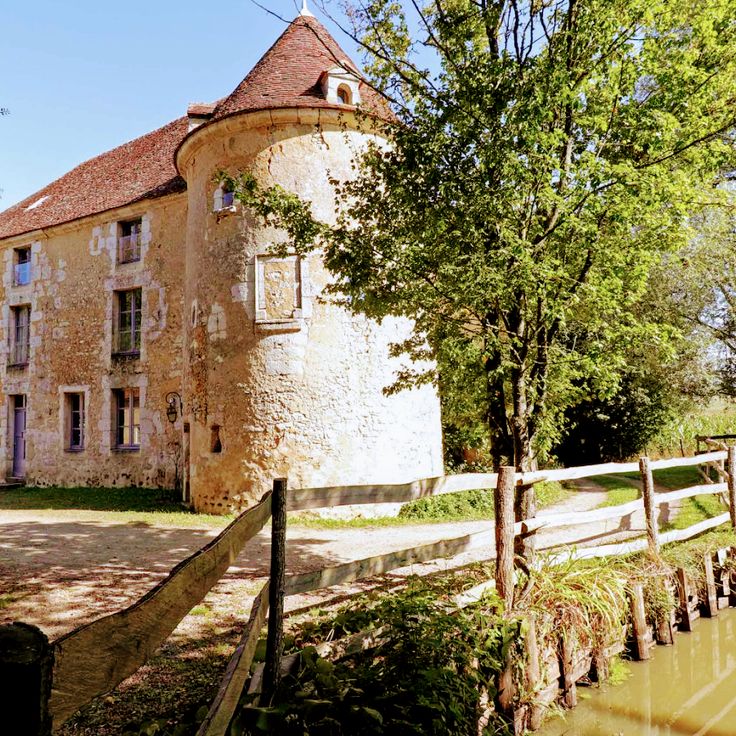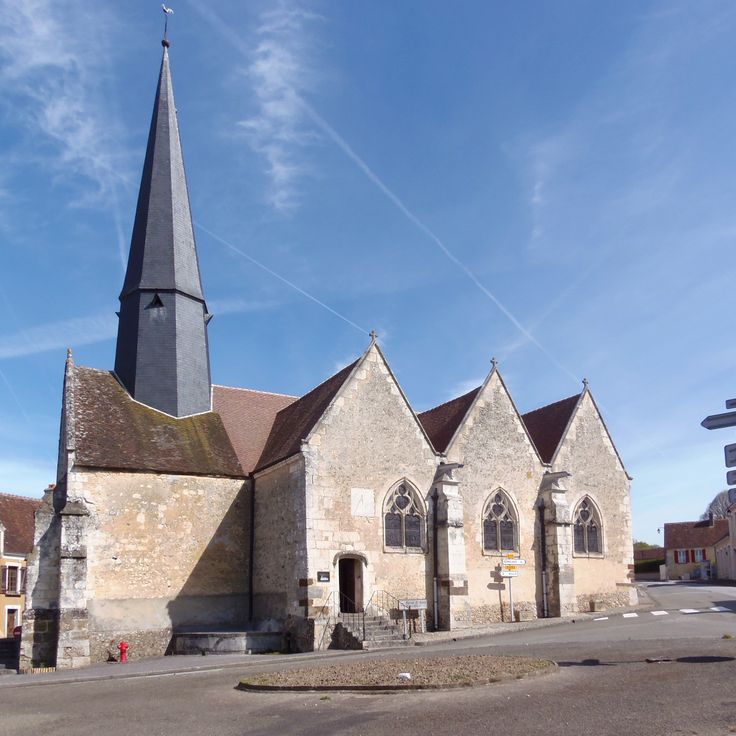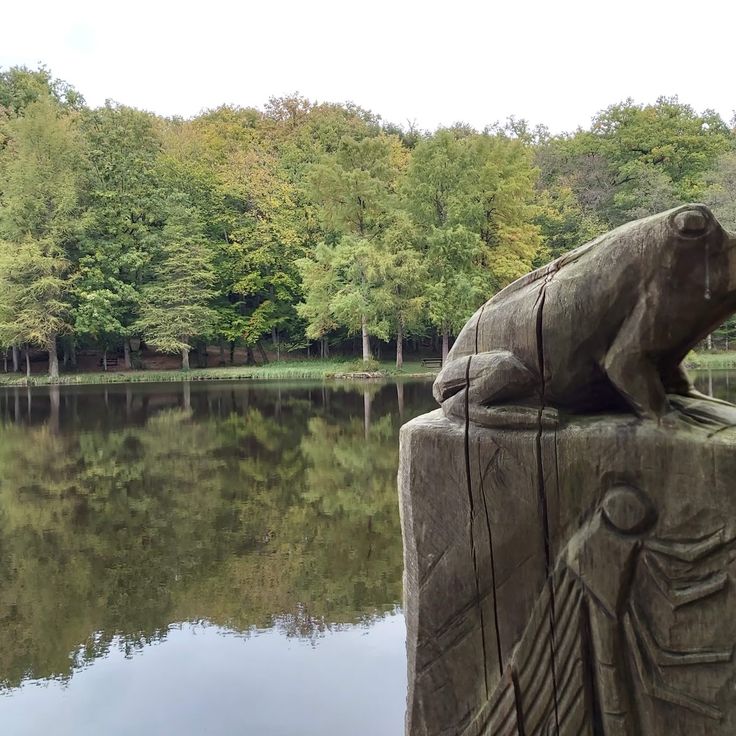The Perche region preserves an architectural heritage spanning from the Middle Ages to the classical period. Castles, churches, and abbeys in this Normandy area showcase the evolution of construction techniques and artistic styles from the 11th to the 18th century, influenced by Norman and Ligurian traditions. Medieval fortifications such as the Château de Bellême and Château de Senonches demonstrate the strategic role of this territory between the Duchy of Normandy and the kingdom of France. Religious buildings, including the Church of Saint-Céneri-le-Gérei with its Romanesque murals and the Notre-Dame of Mont Harou with its fortified tower, reflect the importance of monastic and parish life. Lords’ residences like Château de Montimer and Château de Frazé offer insights into residential architecture in Perche. The Perche Museum in Bellême and the Royal Military College Museum in Thiron-Gardais complete this exploration with collections related to regional history and military heritage.
The Château de Montimer was built in stone during the 15th century and shows the architecture of Perche manor houses through its square towers, a courtyard, and farm buildings. Guided tours provide insight into the castle's history and explain its structural features within the context of regional development between the Middle Ages and the classical era in Normandy.
This Romanesque church from the 11th century in Perche preserves murals from the 12th and 13th centuries. The Église Saint-Céneri-le-Gérei illustrates the regional Romanesque art of northern France through its pictorial representations of biblical scenes and holy figures. A stone fountain stands in the garden of the church grounds.
The Museum of the Perche is housed in a restored 15th-century priory and presents regional objects, traditional tools, and furniture from the Perche region through permanent exhibitions that document local life and craftsmanship from the Middle Ages to modern times.
The Church of Notre-Dame du Mont Harou was built in the 13th century and features a fortified bell tower that reflects the military significance of the region during the Middle Ages. The building displays stone vaults and includes an adjacent tithe barn used for grain storage. This church illustrates the connection between religious and economic functions in the rural architecture of Perche.
The Château de Frazé combines medieval defensive structures with Renaissance architectural elements from the 16th century. The castle preserves its original crenellated towers and a water-filled moat, while the interior spaces regularly host contemporary art exhibitions. The extensive grounds complement the architectural ensemble and illustrate the development of manor residences in the Perche region between the Middle Ages and the classical period.
The ruins of this 11th-century fortress sit atop a hill in Bellême. The Château de Bellême offers views of the Perche region from its ramparts and illustrates the strategic importance of this border territory between the Duchy of Normandy and the Kingdom of France during the Middle Ages.
This museum occupies the premises of the former military college founded in 1776. The exhibition rooms trace the military history of the establishment through uniforms, documents, and period objects from the 18th and 19th centuries. This collection illustrates the training of young nobles for military service and complements the architectural and historical heritage of the Perche with its military dimension.
The Church of Saint-Laurent in Nogent-le-Rotrou was built in the 16th century from limestone and displays the Gothic architectural forms of the late Middle Ages in Perche. This building features ribbed vaulting, a bell tower, and preserved stained glass windows from the Renaissance period depicting religious scenes. The church documents the development of ecclesiastical architecture between Gothic tradition and Renaissance in rural Normandy.
This church in Senonches, built in the 12th century, preserves notable furnishings spanning several centuries. The colored stained glass windows reflect medieval craftsmanship, while the 18th-century tribune organ illustrates the liturgical tradition of the Perche region. The building demonstrates the evolution of religious architecture in this Norman area between the Romanesque and classical periods.
Château de Senonches is a medieval fortress built in the 11th century for the Counts of Perche. The structure reflects the strategic importance of this territory on the border between Normandy and the Kingdom of France. Today, the castle serves as a venue for rotating art and history exhibitions that explore the regional heritage of Perche and its architectural evolution from the Middle Ages to the classical period. The fortified architecture with its defensive structures illustrates Norman construction techniques of the High Middle Ages.
The Manoir de Courboyer in Nocé houses the administrative headquarters of the Perche Regional Natural Park and presents the traditional crafts and agricultural products of the region. This 15th-century manor house has been restored and offers spaces for rotating exhibitions documenting local craft techniques and the development of rural economy in Perche. The complex includes several buildings and outdoor areas where events promoting regional products are regularly held.
This abbey church dating from the 12th century stands at the center of the former Benedictine abbey of Thiron and represents a significant example of Norman religious architecture in the Perche region. The church was founded by Bernard of Thiron and displays Romanesque building elements with later Gothic additions. The structure served for centuries as a spiritual center of the region and housed the Collège Royal Militaire, whose history is documented in the nearby museum. The abbey church is among the protected monuments of France and complements the religious heritage of the region together with other Romanesque churches of the Perche.
The Basilique Notre-Dame de Montligeon was built between 1894 and 1911 in Neo-Gothic style and adds to the religious heritage of Perche through its modern architecture. The building reaches a vault height of 213 feet (65 meters) and features colored stained glass windows that flood the interior with light. This basilica documents the development of ecclesiastical construction in late 19th century Normandy and demonstrates the influence of Neo-Gothic style on sacred architecture. The structure combines traditional Gothic forms with the technical capabilities of the industrial era.
The Porte Saint-Denis is a stone defensive structure built in the 14th century as part of the medieval fortifications of Mortagne-au-Perche. Standing approximately 33 feet (10 meters) tall, this gate marks an important passage in the old town and illustrates the strategic significance of the town in the Perche region during the medieval period.
The Château de La Ferté-Vidame is a ruined 18th-century castle located within a 173-acre (70-hectare) park. The estate includes several ponds and formal French gardens that reflect the design of aristocratic residences during the Ancien Régime. The castle was built from 1750 onward for the Duke of Penthièvre and was partially destroyed after the French Revolution. The remaining structures and parkland document the architecture and garden design of 18th-century Perche.
The Saint-André Crypt is located beneath the Church of Saint-André in Mortagne-au-Perche and dates from the 12th century. It features stone vaults and sculpted capitals typical of the Romanesque architecture found in the region. This underground structure illustrates the development of religious architecture in the Perche during the Middle Ages and complements the architectural heritage of the town through its construction techniques and liturgical function.
The Église Notre-Dame in Mortagne-au-Perche is a Gothic church built in the 15th century that forms part of the religious architecture of the Perche region. The bell tower rises 164 feet (50 meters) and defines the town's skyline. The main portal displays carved stonework with sculptures and statues characteristic of Gothic construction in Normandy. This church adds to the network of religious buildings in the region that document the development of medieval building traditions from the 11th to the 18th century.
Château des Comtes in Nogent-le-Rotrou rises on a hillside and documents the development of fortification architecture from the 11th to the 17th centuries. This stone fortress served as a strategic control point on the border between Normandy and the Kingdom of France. The castle houses exhibitions on the history of the Perche and a digital museum that traces the history of the counts of this region, illustrating the feudal administration and military organization of the medieval territory.
The Château de Montmirail is a fortified castle built on a hill at an elevation of 814 feet (248 meters). The ramparts and towers of this medieval structure provide views of the surrounding Perche countryside. This fortification illustrates the strategic importance of this border region between Normandy and the royal territories during the Middle Ages. The preserved defensive structures display typical features of military architecture from that period.
The Église Saint-Nicolas was built in the 18th century in Baroque style and contains marble columns and painted ceilings. This church represents the only Baroque religious building in the region and demonstrates the influence of artistic movements rarely found in the Perche. The structure expands the architectural range of the area, primarily characterized by medieval fortifications and Romanesque religious buildings, with an example of 18th-century classical construction.
The Abbey of Thiron was founded in 1114 as a Benedictine monastery and forms part of the religious heritage of Perche. The site includes nine themed gardens that illustrate different aspects of monastic horticulture. Exhibitions present the history of the abbey and its role in the religious life of the region. The historic buildings now house a school, demonstrating their continuous use since medieval times.
This fortress was built in the 11th century on a rocky promontory. The stone keep rises to a height of 85 feet (26 meters). The remaining walls and towers overlook the Loir River and illustrate medieval defensive architecture in the region, complementing the architectural heritage of Perche that spans from the Middle Ages to the classical period.
The Haras national du Pin is a royal stud farm founded in 1714 to promote horse breeding in France. The estate includes limestone buildings, riding arenas, breeding facilities, and approximately 2,500 acres of pastures and forests. This stud farm ranks among the significant sites of the Perche region, whose architectural heritage spans from the Middle Ages to the classical period.
This church in Courcerault displays Romanesque architectural forms with a rectangular floor plan that underwent modifications in the 19th century. The south wall features two sundials from the 17th century that document the craftsmanship of that period. The building forms part of the religious structures in the Perche region that illustrate the architectural evolution between the Middle Ages and the modern era. The simple design follows the principles of rural parish churches in Normandy.
This manor from the 16th and 17th centuries in Courcerault combines defensive structures with stone walls and displays features of Percheron residential architecture. Recognized as a national monument of France, the building illustrates the development of rural aristocratic residences in the Perche region during the Renaissance and Classical periods.
This stone bridge spans the Huisne River and was built in 1610 according to plans by Nicolas de Catinat. The 17th-century structure features several arches that remain standing, representing an example of bridge construction in the Perche region. The bridge historically served as an important river crossing and connects both banks of the Huisne at Mauves-sur-Huisne.
The Priory of Dame-Marie is a religious complex from the 14th century that has preserved architectural remains despite its destruction during the French Revolution. The surviving walls and structures demonstrate the medieval monastic architecture of the Perche region and illustrate the monastic building tradition of this Norman area between the 11th and 18th centuries.
The Church of Saint-Martin in Gémages is a religious building constructed in stone with a covered entrance porch and a bell tower dating from the 15th century. This church in the Perche demonstrates the evolution of ecclesiastical architecture between the medieval period and early modern times. The bell tower and portal illustrate the building techniques of that era in the Normandy region.
The Dolmen de la Pierre Procureuse is a prehistoric monument composed of vertical stones supporting a horizontal slab. This megalithic structure measures 6 feet (1.8 meters) in height and dates from 2500 BC. The dolmen represents the archaeological evidence of human presence in the region prior to the medieval and classical periods illustrated by the castles and churches of the Perche.
The Château de la Lorière was constructed during the reign of Louis XV and displays symmetrical wings, a stone facade, and rectangular windows with decorative moldings. This residence complements the collection of manorial architecture in the Perche region and illustrates the classical building style of the 18th century in this area of France.
The church of Saint-Pierre-Saint-Paul was built in the 12th century from stone and retains its original semicircular apse and decorative corbel cornice. This Romanesque church contributes to the architectural heritage of Perche and illustrates the construction techniques and liturgical needs of the region during the medieval period.
This former castle chapel in La Perrière shows the connection between religious and military architecture in medieval Perche. The Église Notre-Dame-du-Rosaire features thick defensive walls and Romanesque windows, typical of fortified religious buildings in this strategic border region between Normandy and the Kingdom of France. The architectural features fit into the heritage of the region, where churches often served defensive functions as well.
The Manoir d'Épinay is a fortified manor house built during the 14th and 15th centuries in the Perche region. The upper floor features half-timbered construction typical of regional architecture from this period. Preserved elements of medieval defensive systems reflect the military importance of such manor houses between the Duchy of Normandy and the Kingdom of France. This building complements the region's architectural heritage with examples of fortified residences alongside larger fortifications such as Bellême and Senonches.
The Saint-Ouen Church in Perche dates from the early 12th century and was first documented in 1112. As a Romanesque religious structure, it represents the medieval architecture of the Normandy region, with modifications from the 17th century that reflect the evolution of ecclesiastical construction from the Middle Ages to the Classical period. This parish church relates to the monastic and parish tradition of Perche.
The Étang de Herse is located in the Bellême forest and features a stone fountain with Latin inscriptions dedicated to Venus, Mars, and Mercury. Historical beliefs attributed healing properties to its waters, associated with these ancient deities.
